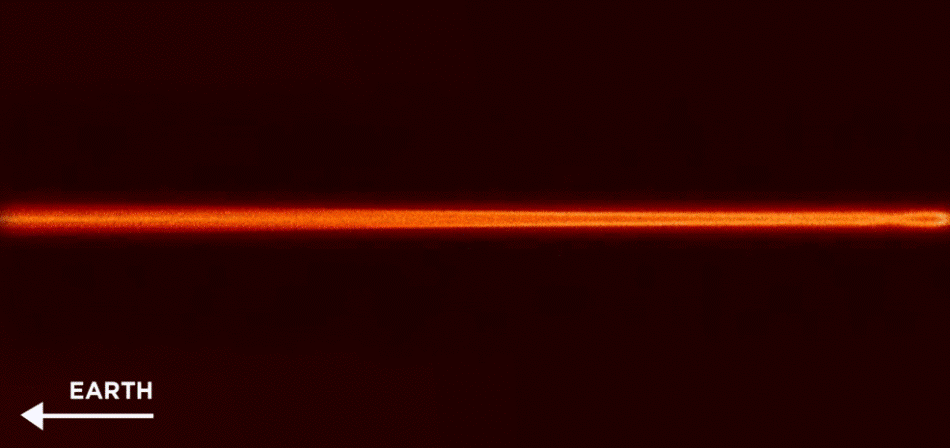Mar 10 2017
 In this simulation, a reconnection event pushes a blob of plasma toward Earth. The jet blown in the opposite direction wobbles due to the unstable conditions. Credits: NASA's Goddard Space Flight Center/Yi-Hsin Liu/Joy Ng, producer
In this simulation, a reconnection event pushes a blob of plasma toward Earth. The jet blown in the opposite direction wobbles due to the unstable conditions. Credits: NASA's Goddard Space Flight Center/Yi-Hsin Liu/Joy Ng, producer
Invisible magnetic explosions take place every day around the Earth, across the universe and on the surface of the sun.
These explosions, called magnetic reconnection, occur during the crossing of magnetic field lines, discharging stored magnetic energy. Such explosions are considered to be a significant way that clouds of charged particles, referring to plasmas, are accelerated all over the universe. These magnetic reconnections can throw charged particles toward Earth, triggering auroras, in Earth’s magnetosphere, referring to the giant magnetic bubble surrounding the planet.
Magnetic reconnection, in addiiton to pushing around clouds of plasma, also transforms some magnetic energy into heat, which indeed has an effect on the amount of energy left to move the particles through space.
Observations of magnetic reconnection from NASA's ARTEMIS - Acceleration, Reconnection, Turbulence and Electrodynamics of the Moon’s Interaction with the Sun - was used by a recent study to demonstrate that in the long tail of the nighttime magnetosphere, extending away from the sun and Earth, an increased amount of the energy is transformed into heat.
This highlights that the exhaust flows, the jets of particles discharged by reconnection, have less energy available for accelerating charged particles than previously thought.
The occurrence of magnetic reconnection between two clouds of plasma comprising of the same density results in a wildly unstable exhaust flow - flapping around just like a garden hose with excessive water pressure. However, based on the event observed, the new results discover that if the plasmas have varied densities then the exhaust will be stable and will eject a smooth, constant jet.
These variations in density are brought about by interplay of the solar wind, referring to the steady stream of charged particles from the sun, and the interplanetary magnetic field that expands throughout the whole solar system.
These new results are considered to play a vital role in understanding how magnetic reconnection can allow particles zoom toward Earth, where they will be able to initiate auroras and cause space weather. These details also provide basic information about what drives movement in space all over the universe, much beyond the near-Earth space that can be effortlessly observed.
More than a decade has been spent by the ARTEMIS spacecraft for analyzing the invisible phenomena near Earth, working together with other missions such as Magnetospheric Multiscale and Time History of Events and Macroscale Interactions during Substorms to develop a complete picture of magnetic reconnection near Earth.